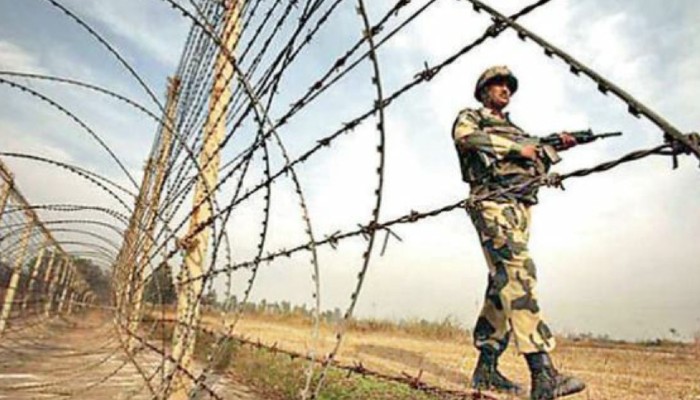Government is trying to recover 1 lakh hectares of encroached land
The Jammu and Kashmir government plans to reclaim at least 1 lakh hectares of encroached state land and village commons by the end of this month. About 65% of this land falls in the Jammu division of the newly created Union Territory, revenue department officials told Scroll.in.
“Out of the total 20 lakh kanal [1 lakh hectares] or so, 14-15 lakh kanal [70,000 hectares-75,000 hectares] have been retrieved and illegal entries against this land in revenue records have been expunged,” said Pawan Kotwal, principal secretary, department of revenue. In other words, the people in possession of the land had been ordered to vacate it.
In Jammu and Kashmir, land is classed under three categories: private or individual property, state-owned land and village commons, which include grazing land. Over time, much of the state-owned land and village commons has been occupied by local residents, although very little of it was used for habitation.
“If someone encroached on state land, it was not unknown to revenue officials,” said a senior official in the revenue department, speaking off the record. “In fact, it was a revenue official like the patwari [village registrar] who would mark the encroachment on state land as an ‘illegal possession’ in the records but he didn’t prevent or force the encroacher to vacate the state land.”
Over time, these encroachments became status quo. In rare cases, Kotwal said, encroachers started construction on the land, with the complicity of local revenue officials. These structures would also be removed.
Under the existing land laws, local revenue officials are empowered to conduct inquiries on suspected encroachments on commons, eject encroachers and impose fines of up to Rs 200. Many in the government believe such widespread and long-term encroachment could not have been possible without endemic corruption among revenue staff at the local level.
‘A record-cleaning exercise’
The scale of the encroachment came to light after an audit of land records was ordered by the administration headed by former Jammu and Kashmir Governor Satya Pal Malik last year.
“This is basically a record-cleaning exercise,” said Kotwal. “At the same time, we are also updating our revenue records. The purpose is that these illegal entries which existed in the records previously, shouldn’t figure in the new record.”
Officials said most of the encroached land is part of village commons like graveyards, cremation grounds, temple and mosque lands and grazing land.
A patwari from Srinagar explained how the process worked. Patwaris were meant to provide reports of state land or commons under encroachment in a particular village to revenue officials at the tehsil level. “Once we provide these details, the Tehsildar or Naib Tehsildar issues the order to expunge these illegal entries from the records,” he said. “After the deletion of illegal entries, eviction notices are sent to these encroachers. They are told to vacate the land within a certain period of time, failing which they will be responsible for all damages when revenue officials come to retrieve it.”
Village headmen were in charge of watching that the retrieved land was not occupied again.
On March 6, the Srinagar district administration said it had expunged all “illegal possession” entries for encroached government and grazing lands from the revenue records. “The illegal entries have been cancelled and expunged for all 34,238 kanals [approximately 1,732 hectares] of encroached land across all seven tehsils of the district,” said a government statement. It also said that the eviction notices were being issued to 17,873 illegal occupants in the district.
In other districts, more land under encroachment is still being identified.
Post special status
According to officials, the process of identifying encroached land and evicting those occupying it has picked up in the last four months and is nearing completion. “We are hopeful of completing this exercise by the end of this month,” said Kotwal. “It is on across all the 20 districts of Jammu and Kashmir Union Territory.”
The auditing exercise appears to have gained pace after August 5, when the Centre stripped Jammu and Kashmir of special status under Article 370 and split the former state into two Union Territories. This meant that land previously owned by the state government was now in the Centre’s possession. Over the last couple of months, the administration has been creating land banks, from which plots will be parcelled out on long-term leases to investors from outside Jammu and Kashmir.
The Centre also revoked Article 35A, which empowered the government of the former state to define “state subjects” and reserve for them certain rights, including the right to own land. After August 5, land laws were amended to strike out clauses restricting the ownership of private property to state subjects.
A backlog
According to officials in the Jammu and Kashmir revenue department, the scale of encroachment would not be this large if land records had regularly been audited and updated.
“There are jamabandis which go back to the 1940s,” Kotwal said. The jamabandi for a village usually contains the list of local landholders and tenants, with details of fields, rents paid by each tenant and land revenue paid by each land holder. It is meant to be updated every four years.
“It is for the first time that these jamabandis are being updated across the Union Territory,” Kotwal said. “As far as land record management is concerned, other states are far ahead of Jammu and Kashmir. In the rest of India, land record management is quite advanced. Our Lieutenant Governor G C Murmu is very keen that we update our records and digitise them.”
Courtesy: Scroll.In
 Contact Us
Contact Us  Subscribe Us
Subscribe Us









 Contact Us
Contact Us
 Subscribe
Subscribe
 News Letter
News Letter

